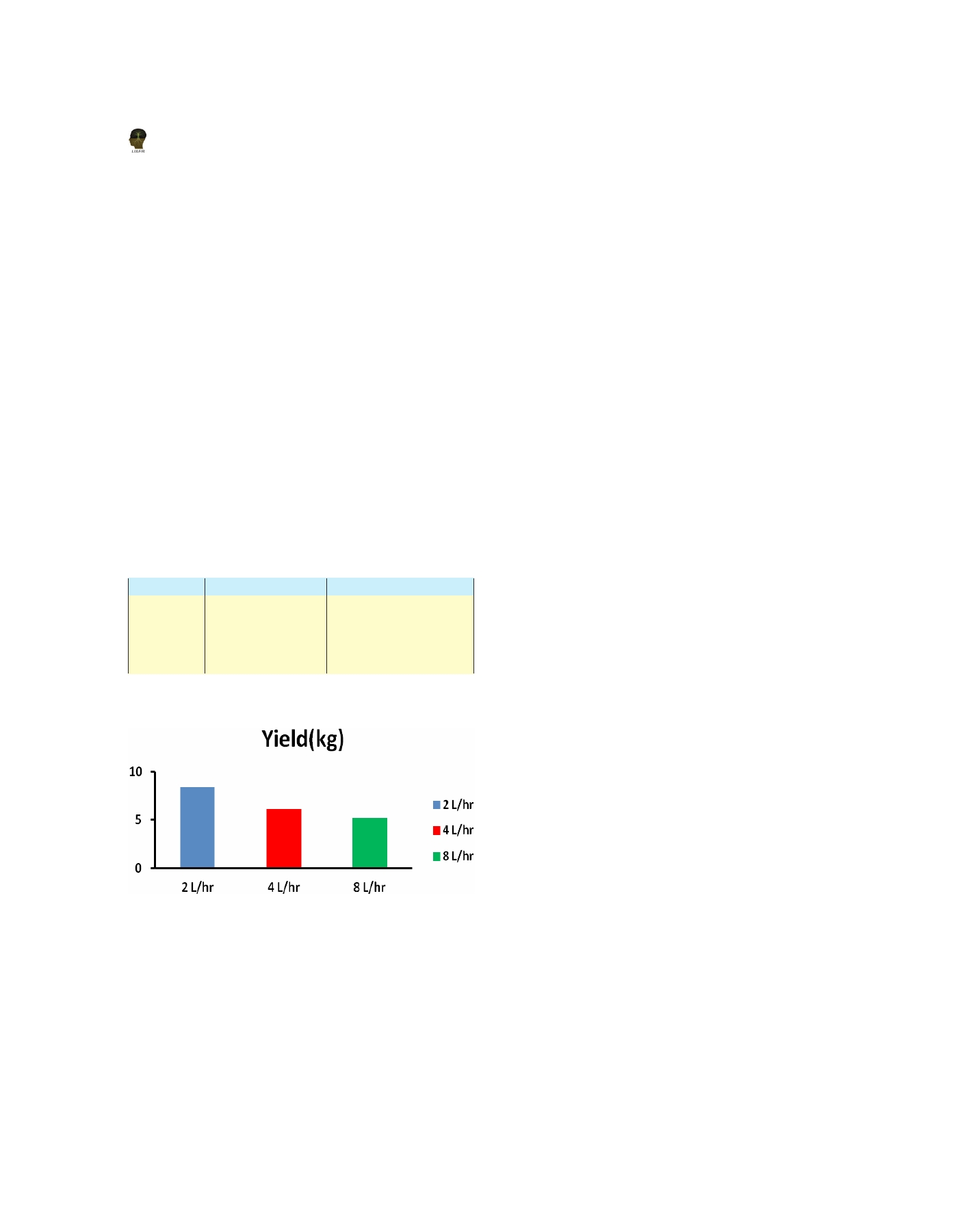
Kumar et al.
were found by 169 %, 162 % and 134% respectively,
leaching and also yield of the crop can reduce. In the
which is more than the non- fertigated plants.
present study, it has been shown that if the flow rate
It can be seen from Table 3 that fruiting in
of water in dripper is up to 2 litres per hour, then
fertigated tomato plants started from third week of
the yield will be maximum. Also at this flow rate,
transplantation for 2 L/hr and 4 L/hr of flow rate
uptake of fertilizers through the plant root zone will
where as in case of 8 L/hr flow rate flowering start
be maximum.
from fourth week of transplantation. Maximum 29,
Conclusion
20 and 19 number of flowers was counted at flow
rate of 2 L/hr, 4 L/hr and 8 L/hr respectively. Details
The primary goal of this study was to analysis the
variation of fruiting with time for different flow rate
growth rate of tomato plant at different flow rates
of 2 L/hr, 4 L/hr and 8 L/hr are presented in Figure 5.
of drip irrigation, to compare the yield of tomato
at different flow rate and to determine the effect of
The yield of fertigated tomato plants at different flow
fertigation through drip irrigation on growth and
rate of drip irrigation was estimated and presented
yield of tomato. For experimentation, a rectangular
in Table 4. Total yield of fertigated tomato plants 8.4,
farm area of 6 m×5 m was prepared for the cultivation
6.1 and 5.2 kg was estimated at flow rate of 2L/hr, 4L/
of tomato through drip irrigation. The “Samartha F1
hr and 8L/hr respectively.
hybrid” variety of tomato seed was selected for this
study on the basis of environment, sustainability,
Table 4. Yield of fertigated tomato plants at different flow
adaptability and availability in local market. Whole
rates
farm area was divided into two sections and each
Serial No.
Flow rate (L/hr)
Yield (kg)
section having three ridges. The recommended
fertilizer was provided in only one section with the
1
2
8.4
three different flow rates of 2L/hr, 4L/hr and 8L/hr in
2
4
6.1
three different ridges. Only irrigation was provided
3
8
5.2
with three different flow rates of 2L/hr, 4L/hr and 8L/
hr in three different ridges in other section. Growth
The comparison of yield of ferigated tomato plants at
of tomato plants in terms of height and crown spread
different flow rates are presented in Figure 6.
(canopy) were measured in weekly basis for each
flow rate. Effect of fertigation on growth and yield
of tomato plants were estimated at different flow
rate of drip irrigation. The results suggest that when
tomato field is cultivated with irrigation of 2 litres
per second, the overall development of the tomato
crop as well as the yield is maximum. Moreover,
controlled fertigation at the same flow rate enhance
the productivity of the tomato cropping.
References
Figure 6. Yield of tomato (kg) at different flow rate
Afolayan, SO, Ogedengbe, K, Lateef, SA, Akintola, OA, and
From Table 4 and Figure 6, it can be concluded that
Oladele, OJ (2014) Response of tomato (Lycopersicium
rate of application of irrigated water through drip
lycopersicun, CV UC82B) to drip irrigation and planting
conditions. African Journal of Agricultural Research 9 (20):
irrigation plays a very vital role on the overall yield
1543-1549. http://dx.doi.org/10.5897/ajar2012.476
of the crop. If the flow rate will not be optimally
Al-Ghobari, HM (2014) The assessment of automatic
decided, then there will be loss of fertilizer through
irrigation scheduling techniques on tomato yield and
18